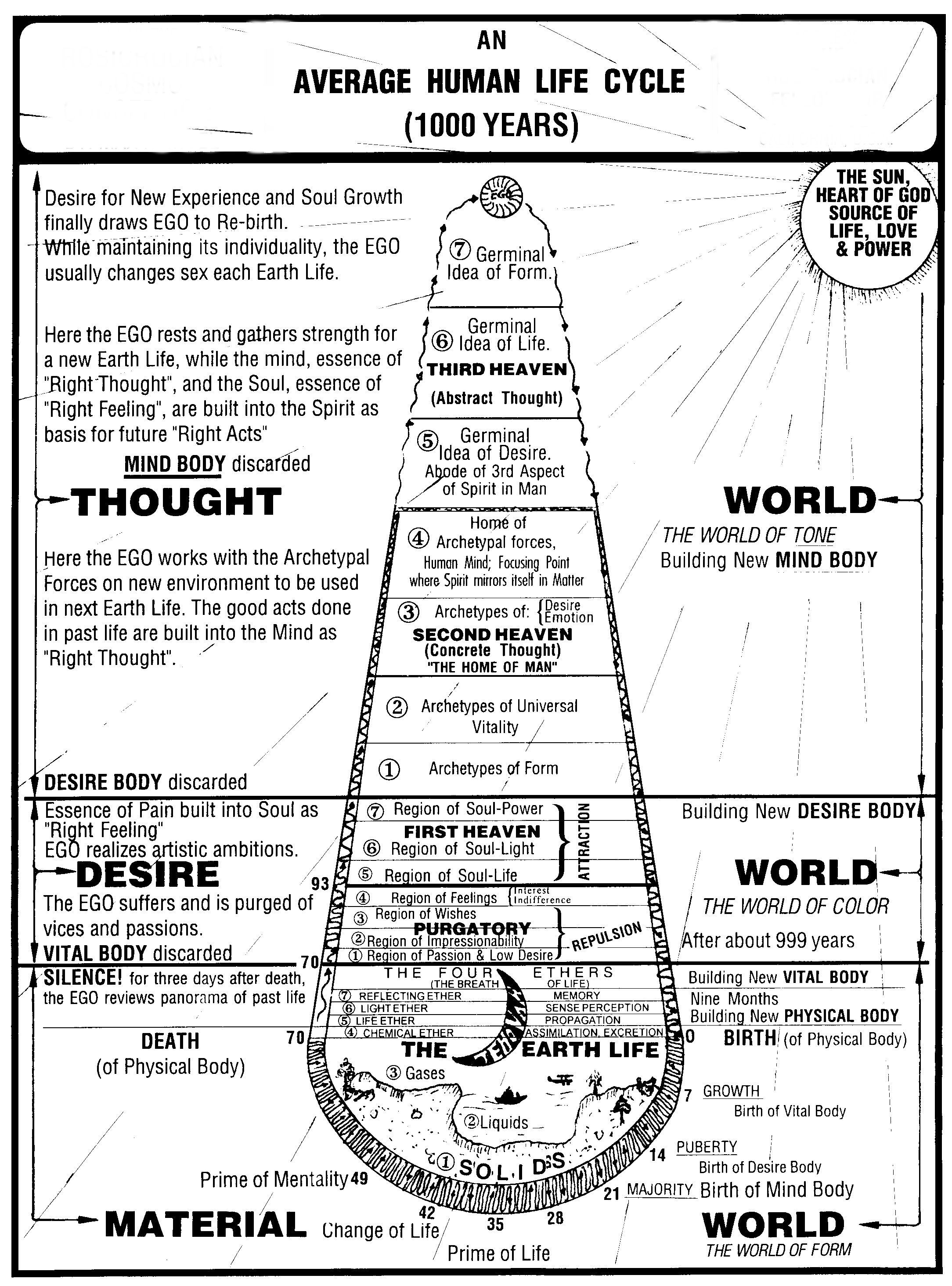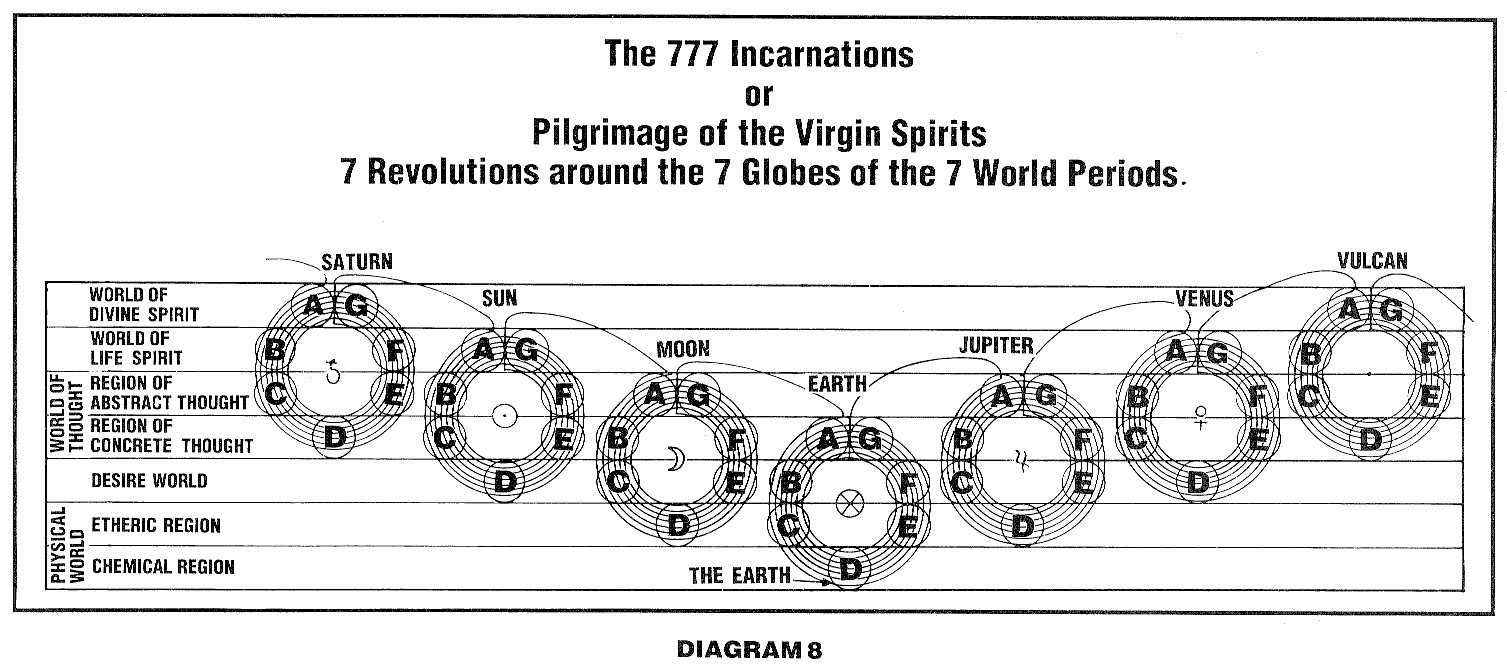
| rosanista.com | ||
| Simplified Scientific Christianity |

India's two greatest epics are the Mahabharata and the Ramayana, both very ancient. The latter consists of seven books. They belong to India's Cycle of Chivalry; but bad they been epic poems of a secular nature only they could never have found their way into a collection of sacred writings. They are repositories of true spiritual wisdom, the lore of Initiate-minstrels like those who produced the Grail Cycles of the West. They sang to courts and princes, and their inner circle of intimates and disciples often included the nobles of the land. But above and beyond all the glamorous romanticism burned a spiritual light of which they were the emissaries. The Kavyas or court epics of medieval India followed the grand tradition of the Puranas, though on a less exalted plane.
The Ramayana and Mahabharata take their place with the Vedas and, like the Vedas, are believed to be invested with powers of illumination. "He who reads and repeats this holy life-giving Ramayana is liberated from all his sins and exalted with all his posterity to the highest heaven." Brahma is made to utter a prophecy in the presence of the poet Valmiki: "As long as the mountains and rivers shall continue on the surface of the earth so long shall the story of the Ramayana be current in the world."
The life of the hero Rama is marked from the beginning with a spirit of sacrificial service, He drinks willingly of the cup of world evil that mankind may have an easier and a surer path to emancipation. Rama's attitude is the same as the Christian ideal: non-resistance; forgiveness of those who inflict injuries; compassion, tenderness and love for all things, both great and small.
His wife, Sita, was. not born of woman but "in a furrow where her father, King Janaka was plowing" — symbolical of an immaculate conception. The sorrows and renunciations of Sita and Rama typify sacrifices which love always makes for its beloved. Their blissful love is significant of the Mystic Marriage, union of the individual soul with God. Rama sings of Sita: "Her presence is ambrosia to my sight." Even the thought of her invisible presence lifts him to ecstasy: "A heavenly balm is poured into my heart, a well-known touch changes my insensibility to life. It is Sita or am I dreaming?" he cries exultantly as he envisions her loveliness.
The poem ends in their permanent reunion-consummation of the Mystic Marriage-and the restoration of their twin sons-blending of the lower and higher natures, the goal of Initiation.
The Mahabharata is the longest epic poem in world literature. It has been called "a vast encyclopedia or thesaurus of Hindu mythology, legendary history, ethics and philosophy." Its dominant theme is the prolonged conflict between descendants of King Bharata, a most renowned monarch of the Lunar Dynasty, who reigned over a large part of India from a capital near ancient Delhi. Natives of this locality still continue to call India by its ancient name of Bharata-Varsha, meaning land of the Bharata.
The Mahabharata is divided into eighteen parts or books, but no doubt some of it consists of sections or interpolations added during the course of time. In its present form it definitely is not the work of a single author. Many of its legends are Vedic and of remote antiquity; others are of much more recent date, some belonging to the first centuries of the Christian era.
Like the Ramayana, the Mahabharata is primarily a textbook of spiritual illumination. Under the veil of allegory it deals with spiritual unfoldment. This fact renders intelligible many otherwise obscure, even fantastic, passages which, if taken literally, seem ridiculous and far-fetched.
The poem narrates at length the heroic exploits of the fiVe sons of Pandu, descendant of King Bharata. These sons are all of supernatural birth and possess magical powers. The five Pandavas represent the five physical senses. Their exploits illustrate powers to be gained by spiritualization of these senses. All five marry Draupadi — a princess, born from sacrificial fires upon a Brahman altar, who exhaled a divine perfume which sweetened the air for a league round about her, like a tree heavy with blossoms in the spring.
"Then the five high-minded sons of Pandu and the noble Draupadi roamed onwards, fasting, with their faces toward the East, their hearts yearning for union with the Infinite, bent on abandonment of all worldly things. They wandered on to many countries, many a sea and river. Yudhishthira, eldest of the brothers, walked in front; next to him came Bhima, and Arjuna came after him; and then the twin brothers, and last of all came Draupadi with her dark skin and lotus eyes."
At last, in high and blissful reunion, they find the complete peace and happiness which is unattainable upon the earth.
Of all oriental literature, the Bhagavad-Gita is probably the most familiar to Western readers and students. Its lofty idealism and clear philosophical thought, together with its rich beauty and warmth of spirit, have won occidental adherents as loyal as any of those in its native land.
It is the Celestial Song, the Song of Divinity. It is set in the Mahabharata, its theme being continuous with the theme of that epic work.
The royal family of Hastinapura was divided into two branches, the Kauravas and the Pandavas. The former desired to usurp the kingdom of the latter; and after all efforts toward an amicable settlement had failed, the two armies assembled for conflict upon the "holy field of Kurushetra," as mentioned in the opening lines of the poem.
As in the Christian Bible, scenes of war and conflict represent allegorically the battle which rages between man's higher and lower natures until he has become regenerate. Such a battle, Sanjaya declares, is an open door to heaven.
The Kouravas typify mortal man, their King, Dhritirashtra, being wholly blind — that is, blind to spiritual truths. It is to the blind King that the events of the battle are narrated by Sanjaya, a holy one.
The wonderful dialogue between Krishna and Arjuna at the commencement of the battle forms the principle motif of the Bhagavad-Gita. This dialogue includes the elucidation of the most beloved abstractions of Bramanical thought, such as:
"Know that to be indestructible which pervades all this.
"There is no existence for that which is unreal, there is no non-existence for that which is real.
"As a man casts off old clothes and puts on new ones, so the embodied (self) casting off old bodies goes to others and new ones.
"For one that is born, death is certain; and to one that dies, birth is certain.
"That sensible man to whom pain and pleasure are alike, he merits immortality."
The term Upanishad has been loosely translated to mean "to sit in adoration at the feet of the Master," and the Upanishads are called "Forest Books" because they were taught in the seclusion of forest retreats. They are roughly contemporary with the appearance of the Hebrew prophets up to the Exilic Period.
The four Vedas — the Rig, Yajur, Sama and Atharva-show throughout two main paths of attainment, the Sacrificial Way and the Way of Devotion. To Western aspirants these are the way of the head and the way of the heart. As in most sacred literature of the Orient, there is no reference to authorship. They are considered to be the direct utterance of God — an attitude of mind familiar enough to the West where, until recent times, the Bible was thus looked upon by Christians and Jews.
The various Upanishads stress philosophic speculation. Of those which have been translated for the Western world, perhaps the best known is the Isa-Upanishad, the theme of which is the nothingness of objective life and the allness of spirit; the Katha-Upanishad, which details life after death and also the initiatory experience of the human spirit; the Kena-Upanishad, the spirit of which may be expressed in the lines:
The widespread influence of these books is reflected in the words of Schopenhauer: "In the whole world there is no study so beneficial and elevating as that of the Upanishads. They have been the solace of my life; they will be the solace of my death."
These writings point to the ineffable Sun God (Spirit of Light) who is to come, as instanced in the Isa: "O Sun, sole traveller of the heavens, controller of all-now through Thy Grace I behold Thy blessed and glorious form, the effulgent Being who dwells in Thee."
Another poem of adoration is addressed to the celestial Sun Spirit, the archangelic Christ: "The face of Truth is hidden by a golden disk; O Pushan (Effulgent Being), uncover Thy face that I may behold Thee!"
Krishna, the God of Love, most popular of all the later deities of India and eighth incarnation of Vishnu, appeared, according to Indian chronology, near the end of the Dwapara, the Third or Copper Age. The Copper Age was preceded by the Silver and Gold Ages, highly spiritual times wherein the Gods descended to commune with men. The Copper Age brought increasing materiality, which necessitated sending messengers or helpers to earth. The Kaliyuga, the Fourth or Iron Age, was said to begin with the death of Krishna. Astronomically, the Vernal Equinox had at this time passed by precession into Aries, the constellation ruled by Mars, the "iron" planet. The highest spiritual influence was that of Libra, Lord of Love and the sign of the Autumn Equinox. Indian chronology includes the zodiacal ages and also describes tremendous cycles of time based on other astronomical data.
Vishnu, as previously observed, is the Cosmic Christ of Indian theology; and Krishna, the Lord of Love, is the Indian prototype of the Divine Man, the Christed Jesus.
The many legends of the beloved King of the Bedavas are among the most beautiful of the stories told of the incarnations of Vishnu. All down through the ages mankind has adored and endeavored to emulate the divinely sent messengers who came to earth under the impulse of the Cosmic Christ and prepared the Way for this Great Being's later descent and incarnation at the dawn of our Christian Era. Each of Vishnu's "embodiments" strengthened the forces of unity and increased the power of love, thus helping to prepare the planet and humanity for the eventual coming of the Christ.
This great work of changing the planet and raising the life of humanity through the infusion of the Christ Principle has been and continues to be a long and arduous process. When the forces of unification draw peoples and nations into closer union through the cohesive power of love, then will the Christ be able to re-manifest in our midst. All the world is waiting for this Second Coming.
— Corinne Heline

|

|

|
|
|
Contemporary Mystic Christianity |
|
|
This web page has been edited and/or excerpted from reference material, has been modified from its original version, and is in conformance with the web host's Members Terms & Conditions. This website is offered to the public by students of The Rosicrucian Teachings, and has no official affiliation with any organization. | Mobile Version | |
|